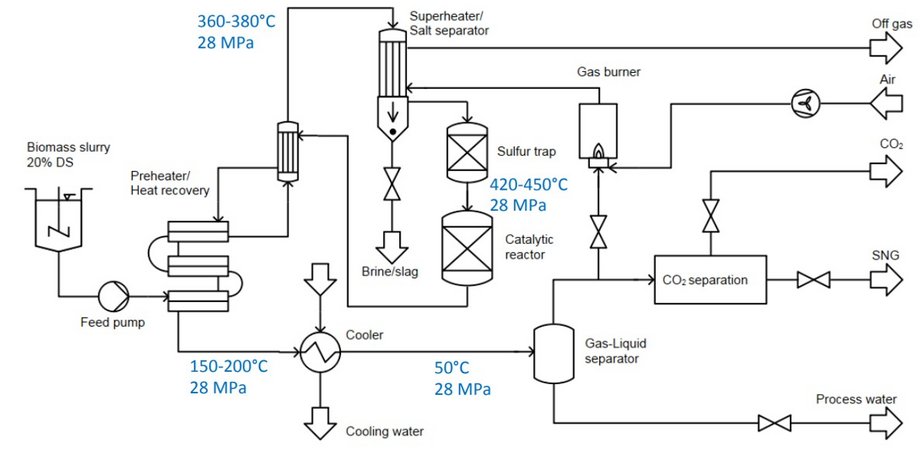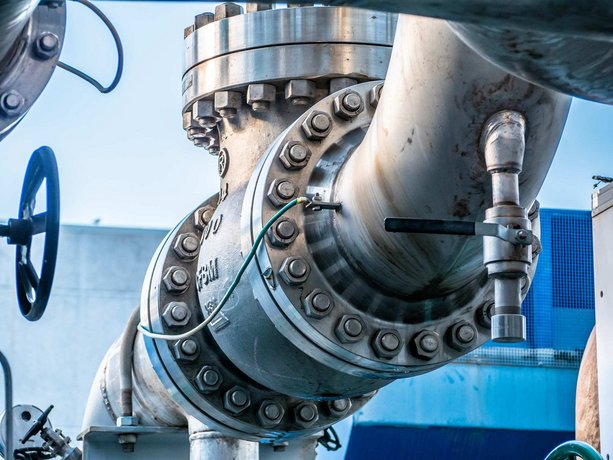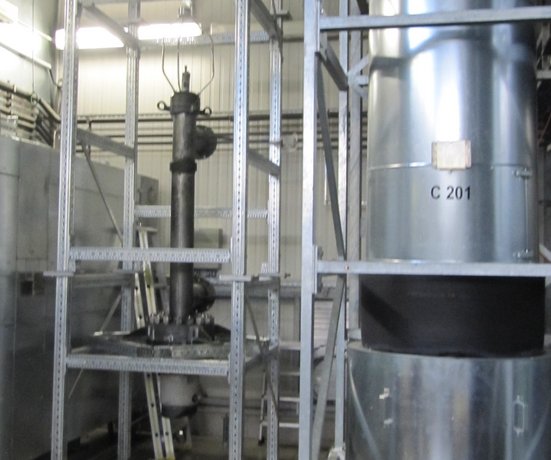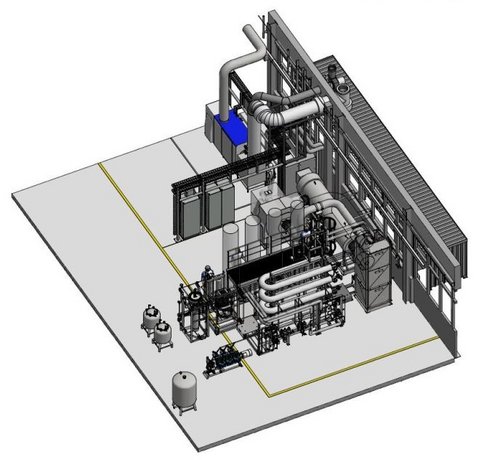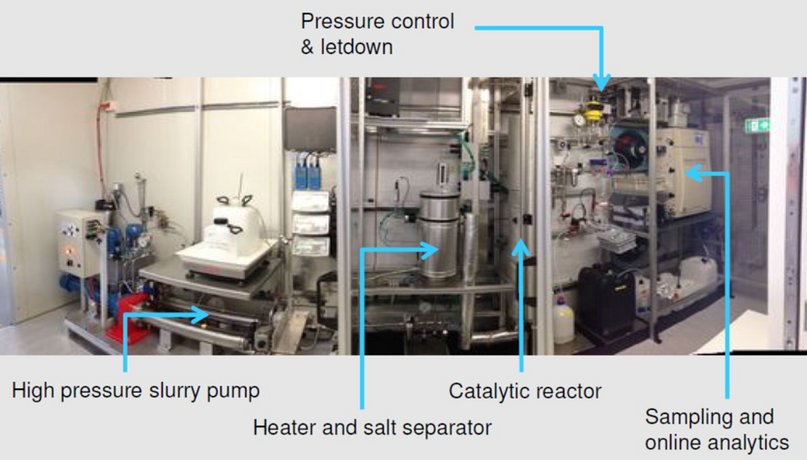Catalytic hydrothermal high-pressure gasification
Technology for implementation of catalytic hydrothermal high-pressure gasification (supercritical)
for waste disposal and production of synthetic natural gas (SNG) and recovery of phosphorus, ammonium salts, etc., from aqueous biomass and aqueous waste
Once the feed (aqueous biomass, aqueous waste) has been prepared and shredded to allow it to be pumped, it is pumped via a high-pressure pump into a first heat exchanger, where the feed is heated to around 300–360°C at an operating pressure of 250–350 bar. This ensures the solid components of the feed are liquefied. In the next stage (a salt separator), the feed is again heated up, this time to a maximum of 400–450°C. Under these conditions, the inorganic components are precipitated in brine (nutrients) and removed from the system. Nutrients such as phosphates etc. can be recovered from the brine and used for a new purpose.
The liquid main feed is then sent through a catalytic reactor. Here, in the supercritical range of 360–420°C and at an operating pressure of 250–350 bar, biomass gasification or methanation takes place.
The feed is subsequently used for energy recovery. At the end of the process, the gas/liquid mix is cooled further and separated into biogas and water in the phase separator. The biogas can be easily refined into biomethane of natural gas mains system quality. Part of the gas is used for generating hot air and operating the salt separator via a gas burner that provides the necessary process energy for the overall process. The water is so clean that, after prior analysis, it can be released into the natural environment or sewage treatment plant without further process steps.
The outstanding benefits of this technology:
- Aqueous biomass and waste are separated into biogas/methane, nutrients and clean water within a few minutes
- The technology is suitable for waste disposal as well as energy recovery
- The method is highly energy-efficient: efficiency levels of 60% or more
- As well as energy recovery in the form of biogas/methane, any nutrients present, such as phosphates and minerals, can be recovered from the brine and returned to the circular economy
In cooperation with the PSI, KASAG has built the Hydropilot pilot plant (the only one of its kind in the world), based on a scale-up of 110.. There are industrial plant concepts for pilot and industrial plants for the following feed mass throughputs:
Types Feed
HTG-DM-Pilot Up to 200kg/h maximum
HTG-DM-500 200 – 500 kg/h
HTG-DM-1000 500 - 1000kg/h
Trials – Would you like to try out this innovative method on your feed (aqueous biomass and aqueous waste)? You can use the Konti-C (1 kg/h) or Hydropilot (up to a maximum of 110 kg/h) test plants at the Paul Scherrer Institute.
Just contact us..

